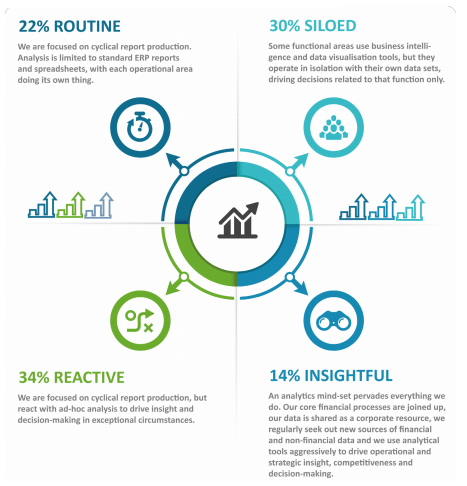In these uncertain times, businesses are having to deal with a shaky economy as well as keeping up with a fast-moving digital revolution. Every business can overcome the struggle to stay afloat and prosper, by making data their greatest asset. Today, data is the invaluable key that not only logs a company's transactions, but unlocks insights into a future full of limitless possibilities.
Leveraging transaction analytics to boost your business
In today's business world, data gained from transactions insights and customer interactions drives every business strategy. Businesses globally are harvesting unprecedented amounts of it, but are they using it effectively to leverage business potential? Data and the resulting analytics - through efficient management - creates insights into customer behavior and provides a deeper understanding of sales as well as customer spending patterns. No business should be content to save data without putting it to good use through detailed analytics - and that doesn't mean simply creating a summary of transactions or a list of logs at the end of the day.
Customer experience, data and analytics
Data provides a way to get to know customers and what they want so you can add value to your business strategy. Using information and analytics will drive personalized consumer engagement. Transaction analytics and metrics, based on information and payments data, gives a business the edge to improve profitability, optimize revenue and cut costs. Without data and analytics to get clear visibility into your transactions, there's no way to identify transaction performance issues, track customer purchase behavior, or detect fraud and other anomalies.
The success of any type of business is based on fulfilling your customers' expectations. This is where the true value of data and analytics becomes clear.
Friction-free transactions
Reducing friction is key to customer retention and satisfaction. Analytics can help to gain insights into the customer experience, and how they view your service. Key metrics can identify friction points like:
Bad user experience
One of the key reasons for losing customers is a negative experience on your web page, so it's important to identify why this happened, and the events leading up to those issues.
Not finding what they're looking for
Analytics logs what content customers search for, how long they search - and if that content search is successful.
Shopping cart abandonment
Analytics help identify the point of shopping cart abandonment, and whether it happens repeatedly
Payment processing issues
Transaction analytics tracks the payment processing journey and logs failed transactions as well as identifying the reasons for failure
Get agile with analytics
Finance forum FSN conducted a survey of finance execs, and found that only 14% of data collected and studied is considered useful or insightful.

Of the remaining 86%, the survey determined that:
- 34% is reactive, and only applicable to decision-making in exceptional circumstances
- 22% of analytics is just producing procedural cyclical reports and logs
- 30% of data is siloed, disconnecting any decision-making from the financial gains of those decisions
At its core, any digital business needs to utilize data and information across the board, to optimize the user experience.
What data and transaction analytics can achieve
Any industry can benefit from data and metrics in many ways. Behemoth eCommerce companies like Amazon and eBay have long been using transaction analytics and insights to drive sales. By carefully studying the browsing behavior of customers, their shopping habits, needs and product preferences they can tailor each product specifically to the consumer.
But before a business collects large amounts of data, it's important to establish the primary reason for doing so. Storing and analyzing data in large volumes can be costly. What do they want to get from the information? Will following the analytics strategy reveal more about customers, or is it primarily to prevent fraud?
Evaluating data relevance to gain better insights
Determining the true value of your data is important. Was the information collected through social media, GPS results, RFID chip readings, customer sign-in?
To get the most out of data and transaction analytics, businesses need to dovetail data and analytics with IT technologies to avoid compartmentalizing. Investments in IT infrastructure should correlate with data-based analytics technologies and vice versa.
How real time transaction analytics can help business growth
Third party analytics tools and monitoring solutions are vital because they help businesses measure their services, view growth and make decisions all the way through the transaction chain, and across every platform.
The right analytics tools help you see your entire transaction and payments environment so that you can extract the relevant information that directly correlates with it. From there, you can use that information operationally to improve services and gain a better understanding of the way your system performs. You need to access the historical data, and tie it back into real time transaction flow and reporting.
IR's Transact suite of payments solutions
IR's Transact suite of solutions, built on the powerful, advanced Prognosis platform, bring real-time visibility and access to your entire transactions environment. Transact reveals unparalleled insights into transactions and trends to help streamline the payments experience, turning data into intelligence, and assuring the payments that keep you in business today, and into the future.